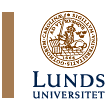

|
Panel No. 9Panel Title: Political Economy of PunjabConvenor: Shinder Thandi, Coventry University, UK Thursday 8 July, 8–12 Panel Abstract: The convenors welcome papers on any sector of the Punjab economy and would like to encourage a political economy approach to the study of any dimension of Punjab economy. We would like the contributors to keep focus on the economy of the Indian Punjab. Within that framework, several modes of flexibility are possible:
Papers accepted for presentation in the panel:Paper Giver 1: Shinder S. Thandi, Coventry University, UK Paper 1 Title: Nasha Vilayate Da: Migration Syndrome and Punjabi Youth Paper Abstract: Although Punjab has a long history of overseas migration, the past decade has witnessed an upsurge in both legal and illegal forms of migration. New and imaginative forms have emerged for engaging in human trafficking both to traditional areas of Punjabi settlement and to newer territories. The main objective of this paper will be to examine the new context of overseas migration in Punjab and the strengthened links with globalised human trafficking networks especially as they operate in Europe. The paper will explore the extent of the human trafficking problem in Punjab, motives for migration, popular methods of financing migration, imaginative schemes of engagement, and major routes and destinations. The paper will also explore how the ‘migration syndrome’ has changed the geography of overseas migration from Punjab and its long-term implications for the evolution of the Punjabi/Sikh diaspora. Paper Giver 2: Virinder S. Kalra, Manchester University, UK Paper 2 Title: A preliminary statistical analysis of a United Punjab from the 1998 (Pakistan) and 2001 (Indian) Census Paper Abstract: The census of Pakistan in 1998 and the decennial Indian census provide a useful set of data from which to present some preliminary statistical data on the demographics and socio-economics of a theoretically constructed 'united' Punjab. The focus here is not so much on differential trajectories (which is important work and has been carried out to some extent by Thandi in the field of agriculture) but rather to focus on the potential market that would be available for industrialists and entrepreneurs interested and capable of investing in a trans-Punjab enterprise. The structural and state barriers to such a venture are formidable, but the data presented in this paper seeks to indicate potential rather than offer policy strictures concerning Indo-Pak relations. Paper Giver 3: Jaswinder Singh Brar, Punjabi University, Patiala, India Paper 3 Title: Indian Punjab Since 1966 : An Analysis of Human Resources in the Context of Economic Growth Paper Abstract: The general socio-economic scenario in the state of Punjab exhibits inextricably complex relationship between education, health and economic growth. The fact of the matter is that the state has been experiencing multiple imbalances between social sector and economic growth. The reasonably high level of state income coexist with relatively moderate level of human resources, when the latter have been measured in terms of educational and health standards. The manifold quantitative expansion in the state domestic product has not adequately been channelised to affect the desired changes in the quality of human resources. Every incremental increase in the state income has inadequately invoked the transfer of resources towards the improvement of the quality of human resources. The imbalance between social sector progress and economic growth has been a matter of great concern in the future development of the state keeping in view the globalisation, privatisation and liberalisation of the national economy. The ever increasing knowledge intensity of the production requires very high level of human resources to compete in the national and international market. Education and health are the key inputs in the development and upgradation of human resources. In view of the above, it becomes important to analyse the social sector progress of Punjab. For this, the social sector progress of the state has been examined both in the absolute and comparative sense. The central objective of the study is to highlight the state's achievements, gaps and imbalances on the educational and health front from numerous respects. The paper has been divided into four sections. The First Section deals with the educational and income level of the state in relation to other states of the union. The human resources development of the state has been compared with that of other states and countries. In Second Section, the critical educational and health indicators of the state has been compared with that of Kerala. It is to be noted that the state of Kerala has recorded the highest level of human resources in the country and has been considered as the best model of social development. The Third Section is concerned with the various dimensions of the educational spread in the state. The last section summaries the main findings as well as policy implications. Full paper to be downloaded (as a pdf-file) Paper Giver 4: B.S. Ghuman, Panjab University, Chandigarh, India Paper 4 Title: Economic Liberalisation and Industrial Development of Punjab Paper Abstract: In India economic liberalisation
was initiated during mid 1980’s. However, in the beginning
of the 1990’s, it became a mother policy encompassing all facets
of the economy. An assessment of the policy suggests that its impact
is uneven across sectors, states and strata of society. The objective
of this paper is to examine its impact on the industrial development
of Punjab. An attempt has also been made to compare Punjab’s
industrial development with other states of the country wherever
possible. Paper 5 Giver: Dhian Kaur, Panjab University, Chandigarh, India Paper 5 Title: Changing Structure of Rural Employment in Punjab – A Spatial Analysis Paper Abstract: The rural employment in Punjab has witnessed notable changes in its structure in consonance with the growth of state economy during the past few decades. The economy of the state has recorded a growth rate of more that 5 per cent per annum particularly after mid 1960’s. Most of this growth has taken place due to development of agriculture and livestock. Following the normal path of development agricultural and livestock have been released some employment to be absorbed by non-agricultural sectors. This is evident from the fact that in 1971, 80 per cent of the rural workforce was employed in agricultural sector, which reduced to 74per cent in 1991 and further reduced to 70 per cent in 2001. This is not evenly distributed over different parts of the state. It varies highly markedly from one part of the state to another. The present paper aims to analyse the spatial variations in changes in structure of rural employment in the state behaved with the growth of the economy? The paper is based on secondary data pertaining to 1971, 1991 and 2001 census years, which were collected from census publications of the Government of India. The analysis is based on the maps, which were prepared using choropleth techniques besides the use of techniques such as mean, correlation and regression analysis. Some suggestions and policy recommendations have also been given from planning point of view. Paper Giver 6: H.S. Sidhu, Guru Nanak Dev University, Amritsar, Punjab, India Paper 6 Title: Punjab Peasantry in Turmoil: A Close Look At The State’s Contemporary Agrarian Scene Paper Abstract: Peasantry in Punjab, which
happens to be the most prosperous state of India, is in turmoil.
Hundreds of farmers have committed suicide in the last few years.
Militant farmer’s organizations are resorting to agitations
quite frequently. The intensity of distress is so acute that farmers
are prepared to die rather than put up with the prevailing circumstances.
Infact recently a farmer was killed in police firing in Amritsar
district. This study takes a close look at the economic condition
of cultivators, tenants and landless laborers, the three sections
of rural society directly involved in agriculture, to identify factors
responsible for this unrest.
SASNET - Swedish South Asian Studies Network/Lund
University
|

